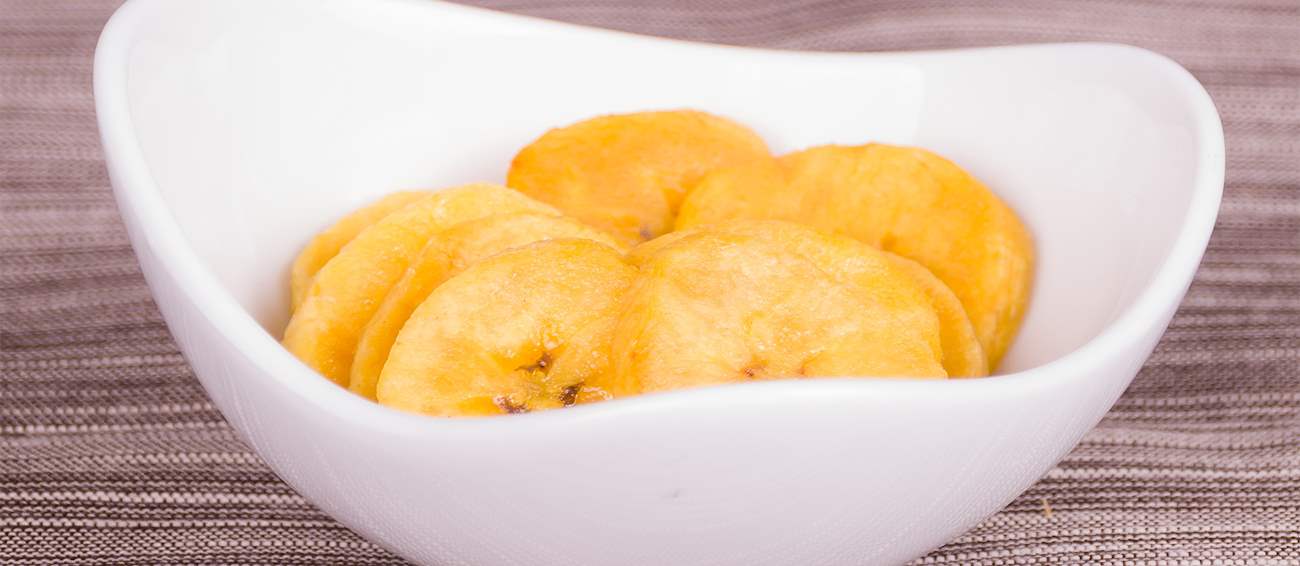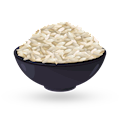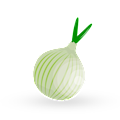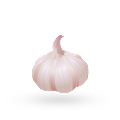MAIN INGREDIENTS
Arroz carreteiro or wagoner's rice is a hearty rice and meat dish hailing from the south of Brazil. Originally, it was prepared by gauchos who needed a nutritious meal on their travels. Back then, arroz carreteiro was made with dried beef, but today it can be made with either charqui or leftovers from barbecues.
Other ingredients include onions, sausages, bell peppers, garlic, oil, and parsley. When served, arroz carreteiro is often topped with grated parmesan.
MAIN INGREDIENTS
Typically associated with Ecuador and the Peruvian region of Piura, chifles are thinly sliced, fried green plantains. They can be sliced crosswise or lengthwise, and while homemade varieties are usually sold as a convenient and portable street food item, they also come in form of factory-produced snacks that are available in supermarkets.
Chifles are typically sided with charqui - shredded dried and salted meat - or other snacks. Similar versions of fried plantains are found in many Latin American countries such as Guatemala, Cuba, and Puerto Rico.
MAIN INGREDIENTS
Originating from eastern Bolivia, majadito is a dish consisting of rice, dried meat, chopped onions, and tomatoes. The origin of the dish dates back to the pre-Columbian era in Bolivia when rice, grains, meat, plantains, and cassava formed the usual food staple among the native people.
It originated in the city of Santa Cruz, from where it spread out across the country. Today it is considered to be one of the national dishes in Bolivia that is commonly served in numerous Bolivian restaurants. Traditionally, beef jerky was used in the dish, but nowadays dry chicken or duck are also frequently used in the preparation of majadito.
Valdiviano is one of the most famous and oldest Chilean soups. Since it is extremely popular throughout the country, it appears in numerous versions, but it typically consists of thin strips of beef jerky or charqui, onions, eggs various spices, and occasionally potatoes.
It is believed to have originated in 1598 when the Spanish conquistadors suffered a significant defeat by the Mapuche people and had to withdraw to the secluded city Valdivia. Cut out from the main food supply routes, their diet relied heavily on beef jerky, which they used in many innovative ways, including this hearty soup that soon became a national favorite.
MAIN INGREDIENTS
Olluquito con charqui is a traditional dish originating from Cusco. This stew consists of two main parts – olluco, a tuber that grows in the Andes, and charqui – dried and salted llama or alpaca meat. The potatoes are cut into thin strips and mixed with garlic, oil, chili peppers, charqui, salt, pepper, and cumin.
Once cooked, the stew is garnished with chopped parsley and served with rice on the side. In Cusco, this stew can be found in most restaurants at any time of the year.
MAIN INGREDIENTS
Charquicán is a flavorful Chilean stew that was originally made with dried and salted llama meat, pumpkin, onions, sweet corn, and potatoes as its main ingredients. Modern versions often employ ground beef instead of dried llama meat (due to its strong flavor) and top the dish with a fried egg.
The name of the dish is derived from the Quechua and Mapuche word charqui, which means jerky. Apart from Chile, this hearty stew is also popular in Bolivia, Argentina, and Peru.
MAIN INGREDIENTS
Kalapurka is a traditional soup originating from Potosí. The soup is made with a combination of beef, pork, or beef jerky (charque), potatoes, onions, garlic, oregano, cumin, salt, pepper, ground hot peppers, and corn flour. When served, a hot volcanic rock is dropped into the earthenware bowl with the soup, and it then begins to bubble.
This soup is a staple breakfast in Potosí, especially on cold mornings.
Chiri Uchu is a traditional dish from the Cusco region of Peru that dates back to the Inca times and is particularly significant during the Inti Raymi (Festival of the Sun) and Corpus Christi celebrations. The name translates to "cold spicy" in Quechua, reflecting its nature as a cold dish with a spicy kick.
The dish comprises a combination of various ingredients, such as guinea pig, chicken, charqui, roasted corn, boiled potatoes, and rocoto peppers, each representing the diversity of ecosystems in the Cusco region. All these components are layered or placed together on a plate and usually enjoyed with a spicy rocoto pepper sauce.
TasteAtlas food rankings are based on the ratings of the TasteAtlas audience, with a series of mechanisms that recognize real users and that ignore bot, nationalist or local patriotic ratings, and give additional value to the ratings of users that the system recognizes as knowledgeable. For the “8 Best Rated Dishes With Charqui” list until April 20, 2025, 814,896 ratings were recorded, of which 531,675 were recognized by the system as legitimate. TasteAtlas Rankings should not be seen as the final global conclusion about food. Their purpose is to promote excellent local foods, instill pride in traditional dishes, and arouse curiosity about dishes you haven’t tried.












